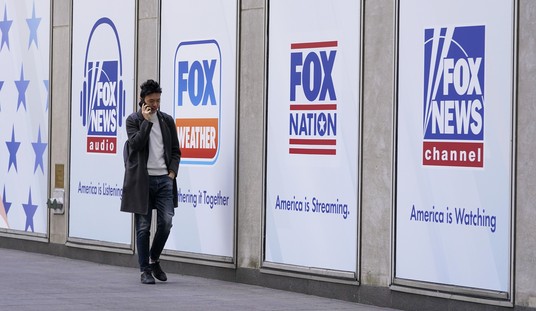The name Zogby -- like Gallup -- has become synonymous with polling and public opinion research on almost every continent. John Zogby, president and CEO of Zogby International, and his polling experts have been trying to predict the outcomes of elections like Tuesday’s Pennsylvania Primary since 1984. After news that his company’s April 15-16 phone poll of likely Democrat voters showed Hillary Clinton with a 45-44 lead over Barack Obama, I called Zogby on Thursday afternoon at his offices in Utica, N.Y.
Q: What has been happening to cut down Clinton’s double-digit lead?
A: Generally speaking, it’s negative campaigning. That’s the broad stroke. There’s plenty of evidence throughout the year that negative campaigning just isn’t working anymore -- that in fact it backfires. That’s broadly. Specifically, it doesn’t work for Sen. Clinton. So it may be one thing to do damage to the opponent, or to have the opponent inflict wounds upon himself, but that doesn’t make her more likable. So essentially, she’s not picking up, in other words.
Q: So her support is eroding as much as Obama’s has been growing?
A: Yes. Well, she was ahead by 20 points two or three weeks ago. She was in the mid-50s, and here she is in the mid-40s and he’s gone from the high 30s into the mid-40s. So it’s been a little bit of both. He’s clearly picked up in the Philadelphia area -- African-American support and suburban support. Meanwhile, she has declined in that area dramatically, though of course she still holds substantial leads in central Pennsylvania and Western Pennsylvania.
Q: Why is she so strong in Western and Southwestern Pennsylvania?
A: It’s a very good question, but let’s use the Ohio model. If one were to do one of those old Joel Garreau cultural things, Western Pennsylvania and Northeastern and Eastern Ohio are one cultural region. It’s very industrial, very Catholic, very post-industrial working class -- meaning service work and so on, a lot of economic victims. Some of it, to be sure, is race. We know that. It’s hard to quantify it, but it’s there. Some of it is, frankly, that Hillary Clinton is a place holder, I think, for John McCain. She is the anti-Obama vote without necessarily being the favorite.
Recommended
Q: What fooled you about Ohio’s primary? Your last poll had that as a tie as well, yet Clinton ended up winning by 10 percentage points.
A: There were some pollsters who did it better than I did. But I was a little too late catching the break. It was the last break of white voters, voting in substantial numbers, and voting against Obama if not for Hillary, for reasons of trade -- remember there were some questions about Obama’s commitment to the opposition to trade -- and some of it clearly was race, and that’s what the exit polls said.
Q: Does the Ohio primary hold any lessons for you or for other pollsters that can help you figure out the Pennsylvania primary?
A: Yeah, I think that there are. Everything was so compressed in terms of primary schedules, it’s hard to remember the context, but we were still very early in the “mano-a-womano” primary. There was still a third candidate there. There was still indecision about the two candidates -- a lack of knowledge about Barack Obama. But Ohio was our first real industrial, working-class, middle-class, Northeast-Midwest test of the two candidates, without there being some variable or another: New York was a Clinton state, Illinois was an Obama state and Michigan was nothing this time around. So clearly what we got to see was what issues would matter and that in a race between a white woman and a black man -- at least in Ohio, in some pockets -- the black man lost.
Q: He lost because he was black?
A: I think in some instances because he’s black. I don’t think that’s the entire factor. But I think also because of some pleasant feelings toward Bill Clinton, a known quantity, and then secondly that there were questions about Obama’s position on trade.
Q: Can you describe the demographics of voters that Clinton's most popular among?
A: Sure. She does very, very well in small-town rural. She does very well among white voters in the big cities -- in the cities themselves. She does well among liberals and particularly among Catholics. She does hugely, or course, among Latinos. She has really just run the board among Latinos. It's a socially conservative, fiscally liberal vote. It’s a big-government vote on one hand, but an anti-abortion, pro-gun vote as well. In this instance, it’s more to her benefit, though I don’t know that it’s a vote that necessarily stays with her were she to win the nomination.
Q: And Obama’s strongest voter groups?
A: Solid African-American. Huge among young voters, then all voters under 60, but particularly voters under 30; very liberal in terms of ideology; urban and suburban liberals in the eastern part of the state, for sure, and for the most part in the Pittsburgh region as well.
Q: Which voting group has Obama been attracting that has enabled him to close this gap with Hillary?
A: What it is, mainly, are middle-class white voters who lean liberal. In this instance, socially liberal; and younger -- meaning second- and third-generation ethnic; higher income -- $75,000 a year or more. That’s allowed him to cut into her lead just enough, along with 88 percent of African-Americans and the nearly 70 percent of voters under 30 that he gets; college-educated as well.
Q: Did Obama’s comments about the “bitter voters” of the small towns of Pennsylvania end up hurting him significantly?
A: It’s counterintuitive. It certainly hurt him among the punditry and hurt him deeply among Republicans. That’s for sure. But in our poll we asked the following statement:
“Recently in a speech before business leaders in California, Barack Obama said that many residents of small-town Pennsylvania are bitter about their economic circumstances and because of that they 'cling to guns and religion.' Critics of Obama say he is an elitist and does not understand working people and what they go through, while supporters say he is the only candidate telling the truth about how hard hit the middle class is because of economic policies of those in Washington, D.C."
Then we asked, "Who are you more likely to agree with? The critics of Obama? Or supporters who say Obama is telling the truth and people are bitter?" Twenty-nine percent said they agree with critics of Obama and 60 percent said they agreed with supporters of Obama.
Q: So obviously, “bitter voters” didn’t hurt him.
A: It did not hurt him. ... Catholics agreed with supporters of Obama, 56-32; whites, 55-33; it’s across the board. We went over the question enough times. I think we worded the question fairly. I don’t see anything. It doesn’t seem to have hurt yet, anyway.
Q: Is there any single most-important voter group that holds the key to winning the state right now?
A: Yes. It’s white middle-income voters. I like that better than “working class” because that connotes blue-collar and, frankly, how many blue collars do we see?
Q: How is that white middle-class vote group breaking now?
A: Overall, it’s Hillary, 45-44. For income, if we look at those in the $25,000 to $35,000 income range, it’s Hillary 48-35; but for $35,000 to $50,000, it’s Obama 53-39; These are small groups, I’m trying to pair these together. Let’s say under $50,000, she leads and he leads in the $75,000 to $100,000 category and they are tied in the $100,000 (and above) category.
Q: There are 9 percent “not sure” voters in your poll. How important are they?
A: They’re huge. For starters, are they going to turn out to vote and how are they going to break? As you so gently put, that’s what I was showing in Ohio. And it was that 9 or 10 percent that broke and broke pretty heavily for Hillary. But while some elements -- especially central Pennsylvania over to the west -- mirror Ohio, Eastern Pennsylvania doesn’t. You have a lot of universities and a lot of wealthy suburbs in Eastern Pennsylvania that can turn out for Obama. Frankly, my hunch is that Hillary probably wins the state -- that it probably breaks for her. But like her Ohio victory, where she won in low double-digits, I am not sure it’s enough to see her as a commanding winner.
Q: Is there anything at this late date that you could conceive of that would dramatically alter the final score one way or the other -- not just these 9 percent “not sures” going to Hillary?
A: Possibly someone named “Kristen.”
Q: Kristen?
A: Oh, I’m sorry. That’s the Elliott Spitzer’s prostitute. (laughs) … Well, it’s hard to imagine because everybody knows everything about Hillary. And what can possibly hurt her? Everything’s been written about and heard for many years. So there’s probably nothing that hurts Hillary except maybe if she continues the negative campaigning. She’s got to get back on a positive message to win votes for her. Meanwhile, sure, some sort of bombshell about Obama could hurt him.
Q: Do you do predictions?
A: No. You only have to be wrong once.

























Join the conversation as a VIP Member